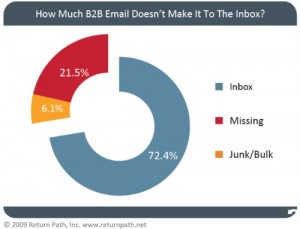Due to the heavy amount of spam that flows through the Internet on a daily basis, it’s important to let your visitors know that they can expect your emails from a particular email address. This means that your visitors must whitelist your website’s email address in order to ensure that your email will arrive at all intended mailboxes. On your end, when your site begins to grow, you may notice an increase in the amount of mail you get and you may want to check out these services to help you get control of your inbox back.
ISIPP
When you get more emails than you can handle, it’s probably because more than half of them are spam messages. While you could go out and purchase some anti-spam software that attaches itself to your inbox, but the problem is that it doesn’t always block spam and it doesn’t always send good email through.
ISIPP can help you better manage your email. This service is geared toward full-fledged businesses as the total monthly costs can reach $300. However, with one of these systems in place, you can practically guarantee that you won’t be getting any more spam!
Habeas (ReturnPath.com)
Habeas was a company founded in 2002 with the intentions of providing information regarding email reputation to over 1 millions email networks and hundreds of ISPs throughout 190 countries. In essence, it certified email as being legit and created a standard for separating good email from spam. The company was eventually bought by ReturnPath.com after being somewhat of a competitor founded in 1999.
The new company has created a much larger email integrity system that also provides Internet Services. At any rate, this topic is more about protecting your own inbox from unwanted spam, but knowing what kinds of things these companies are filtering will allow you to create much better emails so your visitors aren’t required to place your mailing list on a whitelist.
| << Back to Validation | Forward to Landing Pages >> |
 interested users from all over the Internet–usually thousands of varying websites with numerous topics. They collect all of these emails and separate them into applicable categories and lists and then sell them to other websites to use in their marketing plans.
interested users from all over the Internet–usually thousands of varying websites with numerous topics. They collect all of these emails and separate them into applicable categories and lists and then sell them to other websites to use in their marketing plans.